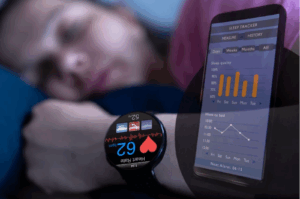What is it, who does it affect and what can we do to combat it
“I was really sad because being sick was preventing me from doing a lot of things I like to do,” said Haley Bryson, a fourth grader from Manassas, Virgina. After a mild bout of COVID, she started to experience a range of symptoms, from headaches to stomach problems so severe she had to be rushed to the emergency room twice. These symptoms took her from being a healthy and active nine year old to, as she says, “lay[ing] down because everything hurt so much” (9). Haley was suffering from long COVID, a condition that seems to affect over 9.8% of children between the ages of 2 and 11 who develop COVID-19 (6). But what is long COVID; who is most at risk; and what can we do to combat it?
Long COVID is a condition that is not yet fully understood. It is defined as the onset of a broad range of symptoms that develop after being infected with COVID and that last for over a month after the initial infection (8). With a list of symptoms ranging from joint pain to cough to a full body rash, it is easy to misdiagnose long COVID and even easier to be misunderstood (2).

Scientists are still unsure what factors make an individual more prone to experiencing long COVID. A recent study conducted by researchers in Hong Kong stated that gut bacteria may play a role in who will experience long COVID. They found that people who were more likely to experience symptoms of long COVID had a lower concentration of F. prausnitzii and Blautia obeum. These forms of bacteria are typically associated with a healthy gut. The guts of the participants who had long COVID also contained a much higher concentration of Ruminococcus gnavus and Bacteroides vulgatus, which are bacteria associated with inflammation, than the guts of people who never had COVID-19 (1, 3).
Another problem is that researchers often disagree about the prevalence of long COVID. While some sources propose that under 5% of people who had COVID-19 develop long covid, others argue that over 50% develop the condition. The problem with collecting the data is that with the wide range of symptoms, including fatigue and headaches, it is easy to be misinterpreted in surveys. How does one distinguish between feeling a bit tired all of the time and physically not being able to get out of bed in the morning due to chronic fatigue? Another problem with collecting long COVID data is that many people with long COVID do not seek medical treatment (4). Both of these factors make figuring out the prevalence of long COVID extremely difficult.

So, what can we do to combat long COVID? A study conducted in Israel found that people who had gotten two or three doses of a vaccine were 50 to 80% less likely to report many of the symptoms of long COVID (5). Although this study was relatively small and more research should be conducted, this is a promising sign for the future (7).
After receiving treatment at the post COVID Care Program at Children’s National Hospital in Washington, DC, Haley Bryson says that she is feeling much better and is expected to make a full recovery (9). As we learn more about long COVID, we should continue to be cautious but also hopeful that cures will be found for this puzzling sickness.
Bibliography:
- BMJ Publishing Group Ltd. 2022. (2022, January 25). Make-up of gut microbiome may be linked to long covid risk. BMJ. Retrieved April 13, 2022, from https://www.bmj.com/company/newsroom/make-up-of-gut-microbiome-may-be-linked-to-long-covid-risk/
- Centers for Disease Control and Prevention. (2021, September 16). Post-covid conditions. Centers for Disease Control and Prevention. Retrieved April 13, 2022, from https://www.cdc.gov/coronavirus/2019-ncov/long-term-effects/
- Henke, M. T., Kenny, D. J., Cassilly, C. D., Vlamakis, H., Xavier, R. J., & Clardy, J. (2019, June 10). Ruminococcus gnavus , a member of the human gut … – PNAS. PNAS. Retrieved April 24, 2022, from https://www.pnas.org/doi/10.1073/pnas.1904099116
- Hamzelou, J. (2022, April 11). A battle is raging over Long Covid in children. MIT Technology Review. Retrieved April 13, 2022, from https://www.technologyreview.com/2022/04/06/1048984/battle-over-long-covid-children/
- Kuodi, P., Gorelik, Y., Zayyad, H., Wertheim, O., Wiegler, K. B., Jabal, K. A., Dror, A. A., Nazzal, S., Glikman, D., & Edelstein, M. (2022, January 1). Association between vaccination status and reported incidence of post-acute COVID-19 symptoms in Israel: A cross-sectional study of patients tested between March 2020 and November 2021. medRxiv. Retrieved April 14, 2022, from https://www.medrxiv.org/content/10.1101/2022.01.05.22268800v2
- Lewis, D. (2021, July 14). Long covid and kids: Scientists race to find answers. Nature News. Retrieved April 13, 2022, from https://www.nature.com/articles/d41586-021-01935-7?mc_source=MTEyNjQxNzM4NjMzNDg2MjM3NzEwOjo6ZTU2NTZmYzEzYjBhNDczZWIxMGJhZDU5NzQxMjljNGQ6OnY0OjoxNjI3OTYyMDYwOjox
- Stone, W. (2022, March 24). Evidence grows that vaccines lower the risk of getting long covid. NPR. Retrieved April 13, 2022, from https://www.npr.org/sections/health-shots/2022/03/24/1088270403/long-covid-vaccines
- Takahama, E. (2022, April 10). Long covid grips some Washingtonians and perplexes scientists; new research underway. The Seattle Times. Retrieved April 13, 2022, from https://www.seattletimes.com/seattle-news/health/long-covid-grips-some-washingtonians-and-perplexes-scientists-new-research-underway/
- Weiner, S. (2021, December 9). ‘Scary and confusing’: When kids suffer from long covid-19. AAMC. Retrieved April 13, 2022, from https://www.aamc.org/news-insights/scary-and-confusing-when-kids-suffer-long-covid-19
Images:
- https://images.ctfassets.net/xkgc88uicblq/6QZV2SDrEbCUUOpGUDn3oo/043d7b667ea70983f00783223fcef40f/LONG-COVID-SYMPTOMS-01.jpg?w=1920&q=85
- https://www.ft.com/__origami/service/image/v2/images/raw/https%3A%2F%2Fd1e00ek4ebabms.cloudfront.net%2Fproduction%2Fbf547810-3300-4674-8cde-e754bba018c5.jpg?source=next-opengraph&fit=scale-down&width=900






Comments are closed.